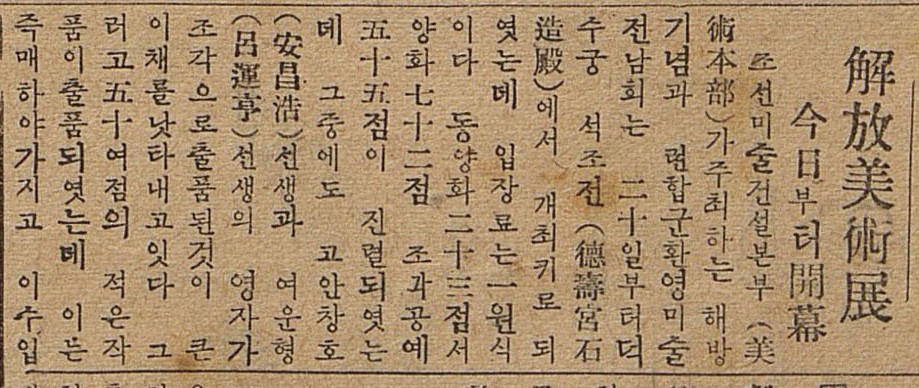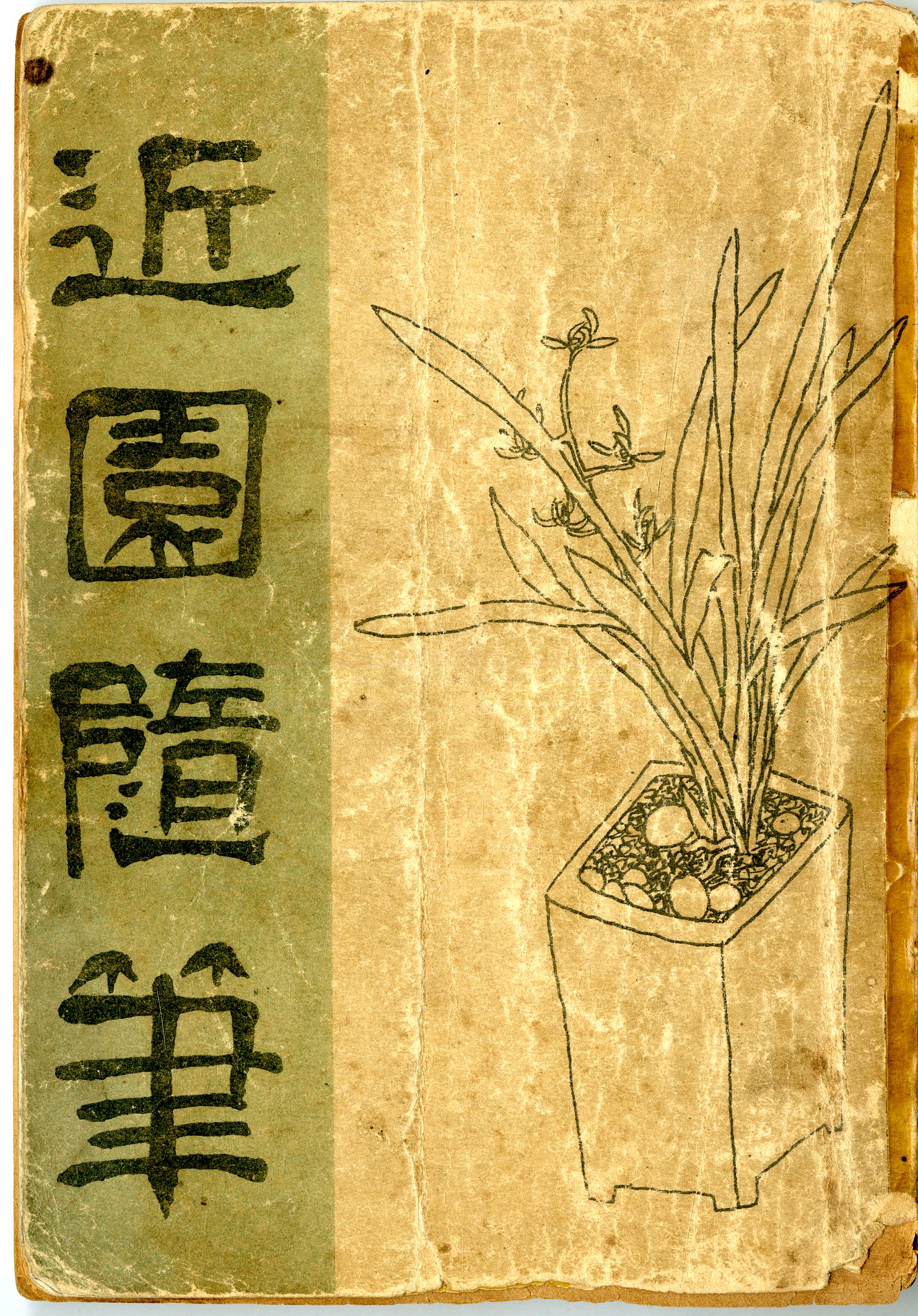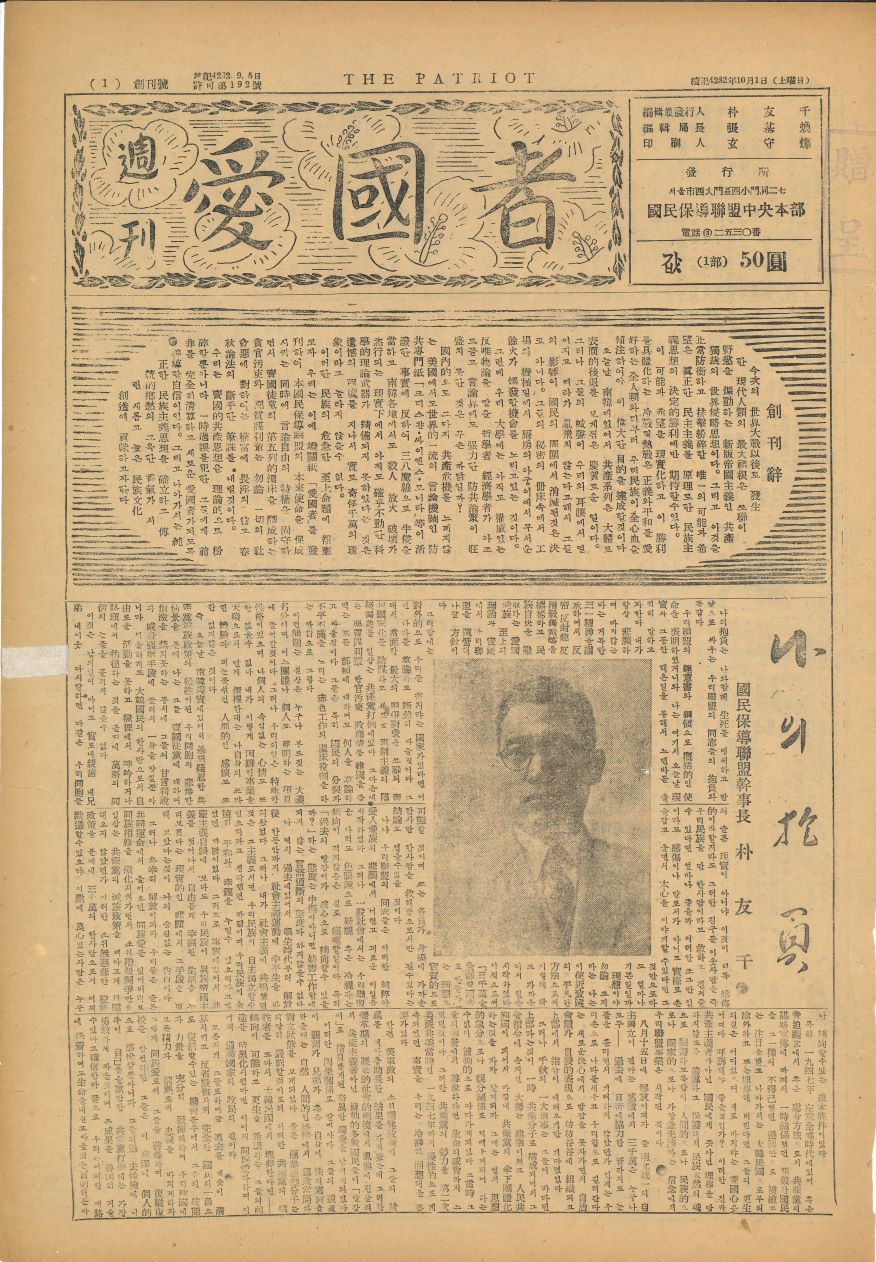
Jeong Hyeonung , Girl Portrait, 1928, Oil on canvas, 43.5x32.5cm. MMCA collection
Jeong Hyeonung
* Source: Multilingual Glossary of Korean Art by Korea Arts Management Service
Related
-

Korean Art Construction Headquarters
An artist organization established in August 18, 1945 and dissolved November 20, 1945. The founding of the organization was led by Kim Jukyung, Jeong Hyeonung, Gil Jinseop, and Yoon Hee-soon. The organization was one of the five divisions of the Central Committee for the Construction of Korean Culture [Joseon munhwa geonseol jungang hyeobuihoe] which included literature, art, music, film, and theater. The goal of the headquarters was the “new and unified building of Korean art,” and Ko Huidong was designated as the head commissioner. The Headquarters was the largest art organization after independence, comprising a total of 186 artists in six different divisions; Eastern Art, Western Art, Sculpture, Crafts, Children’s Art, and advertisement art. The first activities of the Korean Art Construction Headquarters [Joseon misul geonseol bonbu] after its establishment included the creation of banners, portraits, and national flags for the welcoming parade to celebrate the arrival of Allied Forces. From October 20th to 29th, 1945, the headquarters held the first Art Exhibition for the Celebration of Independence and the Welcoming of the Allied Forces. The exhibition featured 23 works of Eastern-style art, 72 works of Western-style art, and 55 works of sculpture and crafts produced by about 90 artists. After the dissolution of the Headquarters, right-wing members including Ko Huidong established the Korean Art Association [Joseon misul hyeophoe] in 1945.
-

Artists who defected to North Korea
Artists who defected to North Korea refer to artists who moved their spaces of artistic activities to north of the armistice line during the period immediately after Korea’s liberation from Japan on August 15, 1945 until the signing of the truce agreement. Prior to the lifting of the bans on artists who were abducted by or defected to North Korea in 1988, they were labeled traitors for “betraying the South Korean system and choosing the North Korean one” or “choosing communism.” Their works were deemed “detrimental to ideas,” so it was forbidden to mention them. However, contrary to the reasons for restrictions imposed by the government, recent studies have revealed that the defection of most artists to North Korea resulted not from ideological choices or alignment with political system of North Korea, but from unavoidable circumstances caused by the war and division of the country. Accordingly, the scope of research on artists who defected to North Korea can vary depending on researchers or research environments. It discusses the conflict and movement between the two spaces of Seoul and Pyongyang or South and North Korea and further includes those that the South Korean government defined as artists who chose the North Korean system. The number of artists who defected to North Korea amounts to roughly sixty to eighty. In recent years, there has been a view that the so-called consecutive lifting, which differentiates and selectively relieves artists who defected to North Korea voluntarily, those abducted to North Korea, those residing in North Korea, and those who returned to North Korea after defection to South Korea, is an act of high-level public security control. This is seen as a non-academic power tyranny and violence against intelligence that insults the particularity of art, leading to voices to dismantle and prospectively reconstruct the existing frame of the lifting of bans on abducted artists and artists who defected to North Korea.
-

Korean Art Alliance
An organization created in 1946 in North Korea. as the result of a merger between the socialist Korean Artist Federation (Joseon misulga dongmaeng), the politically moderate Korean Plastic Arts Federation (Joseon johyeong yesul dongmaeng), the Joseon Sculpture Association, and former members of the Korean Art Association (Joseon misul hyeophoe). Together, these associations collaborated to host an Independence Cultural Art Exhibition and founded the Korean Art Alliance (Joseon misul dongmaeng). The Alliance actively conducted enlightenment activities under the doctrine of “Art for Public Awareness” and leftist artists were the primary members. The leadership of the Alliance was comprised of Yoon Hee-soon, Lee Insung, Oh Chiho, and Gil Jinseop. The Alliance’s doctrines included the implementation of democracy, departure from the influences of imperialism, establishment of National Art, and the enlightenment of the populace. The Alliance engaged in raising public awareness about modern art through activities such as street exhibitions, touring exhibitions, and the production of posters and leaflets. The Korean Art Alliance (Joseon misul dongmaeng) was an influential faction within the art community of the 1940s, raising public awareness about art and issuing statements on political events before disbanding in 1948.
Find More
-

Kim Yongjun
Kim Yongjun (1904-1967, pen name Geunwon) was born in Daegu and first showed his promise as an artist when he was selected for the Joseon Art Exhibition [Joseon misul jeollamhoe] as a high school student. He published art criticism, such as On Reconstruction of Art Circle in Korea and Criticism on Proletarian Art, which demonstrated his potential as an art theorist. He also organized diverse art events, such as Dongmihoe and Baekjman Western Painting Association [Baekmanyanghwahoe] in the 1930s. During his later years, he was more active as an art critic and contributed essays to many newspapers and magazines rather than focusing on creating his own artwork. He participated in creating a magazine, Munjang, in 1939 and published a variety of essays on Eastern painting. After Independence, he contributed to the foundation of the fine arts division at Seoul National University and served as a professor at the Oriental painting department teaching Art History and Theory. He resigned his appointment and moved to Dongkook University because of his involvement in protesting the nationalization of Gyeongseong Imperial University (later Seoul National University). He worked as a dean of the Fine Arts College of Seoul National University for a few months after the outbreak of the Korean War in 1950 but moved to North Korea with his family during the 1950 September 28th restoration of Seoul by US and South Korean forces. He produced several Eastern paintings and published a wide range of art history essays in North Korea. Prior to his migration to North Korea, he wrote a few books such as Geunwonsupil (Essays of Kim Yongjun) (1948) and Joseon misul daeyo (A compendium of Korean art) (1949).
-

National Guidance League Art Alliance
An organization formed by the National Guidance League in April 1949 to convert socialists. According to testimonies, the organization registered and educated artists with socialist tendencies such as Kim Man-hyeong, Jung Hyunwoong, Lee Qoede, Pai Unsoung and Chung Chong-yuo. These artists were made to paint anti-communist posters and street exhibitions were held. The organization was established as part of the anti-communist cultural policies of the government, and it was intended to convert socialist artists and regulate their ideological and creative activities.






